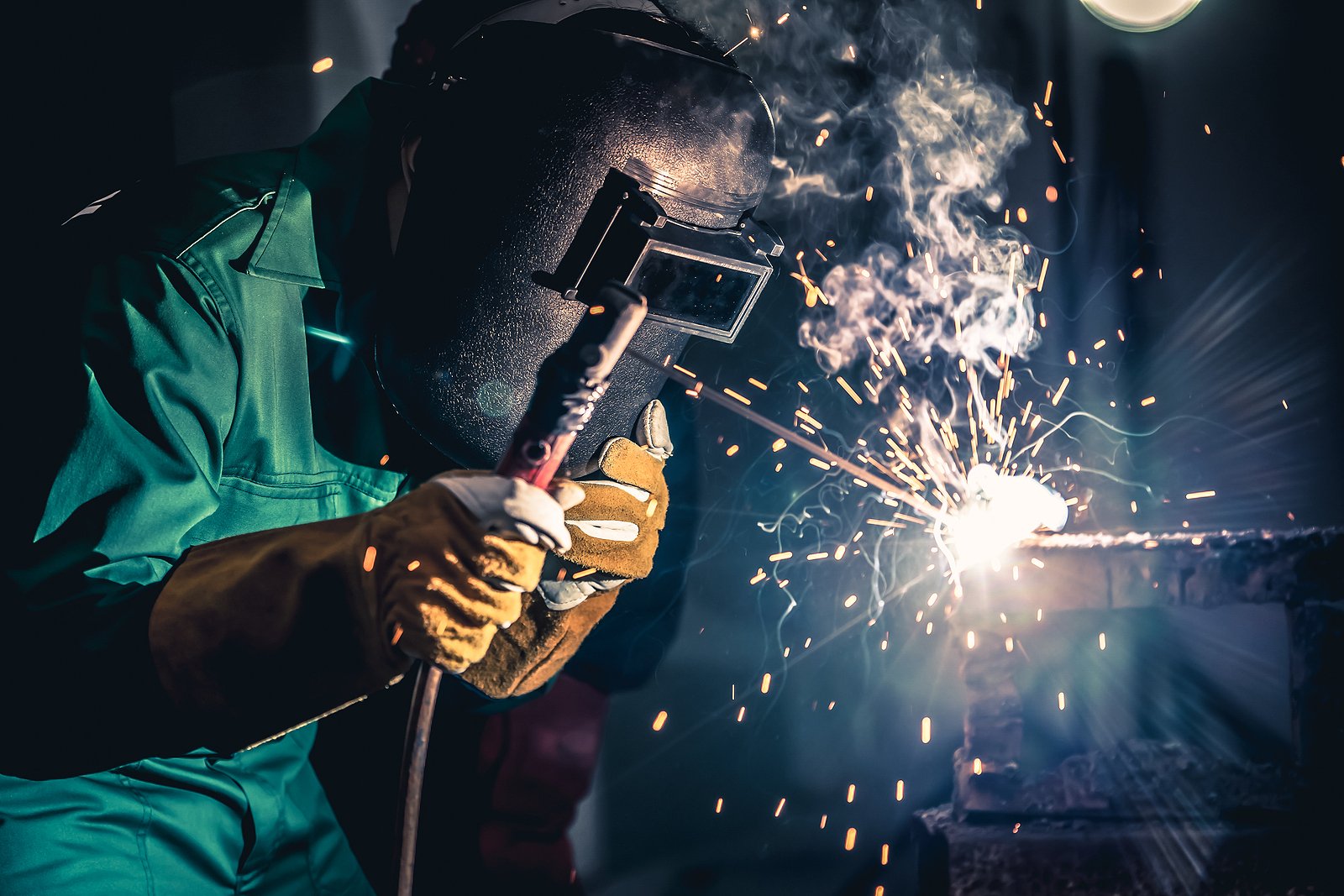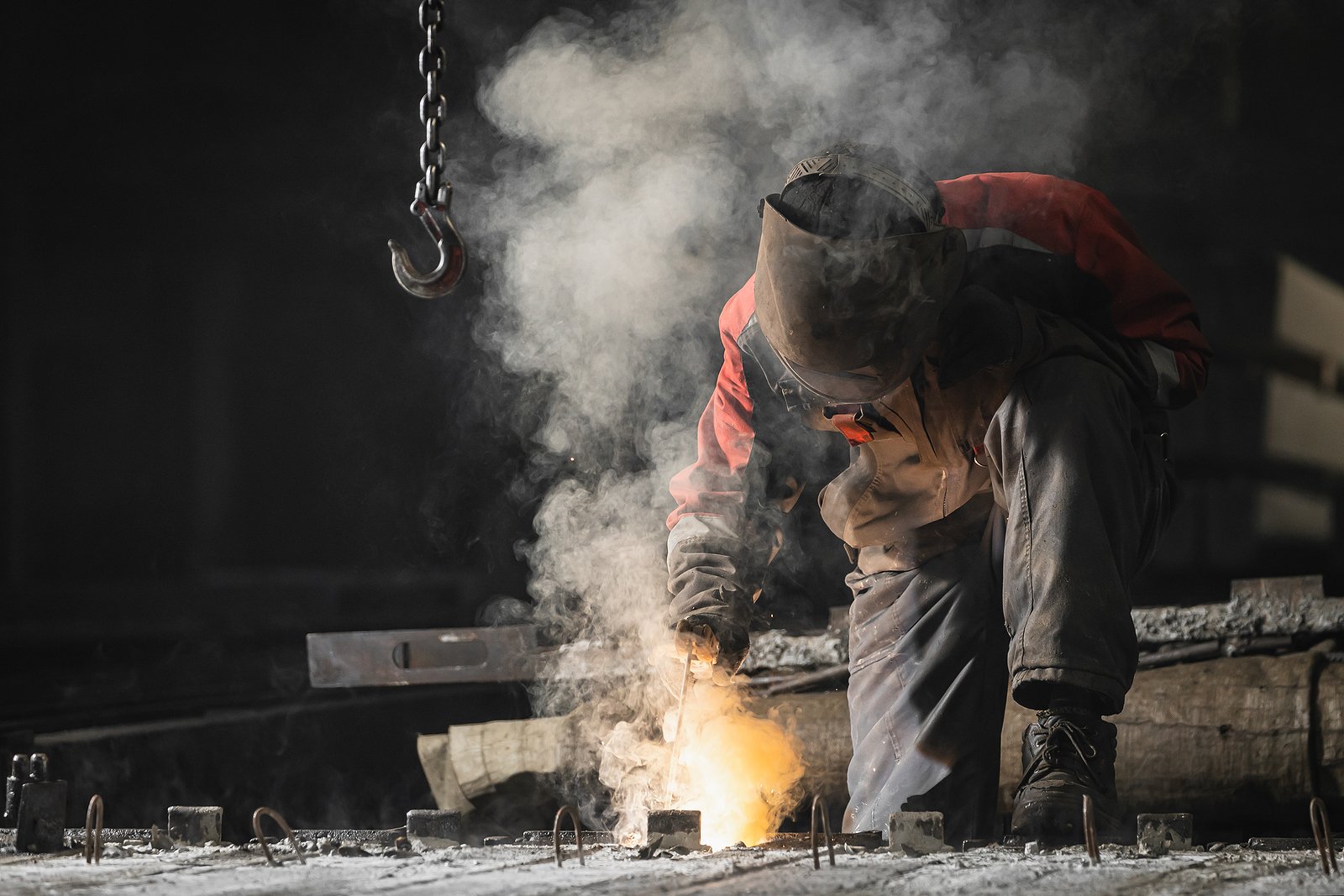What is Hot Work and Do I Need a Hot Work Permit to Work?
 Hot work is any activity or process that generates a source of ignition, this could be through a flame, heat or spark. This creates a major fire risk, a stray spark can easily ignite combustible materials and cause serious harm to the building and people involved. Therefore, your workplace must establish a suitably-tailored safe working system for hot work before people carry it out. More specifically, it will need to prepare a permit to work.
Hot work is any activity or process that generates a source of ignition, this could be through a flame, heat or spark. This creates a major fire risk, a stray spark can easily ignite combustible materials and cause serious harm to the building and people involved. Therefore, your workplace must establish a suitably-tailored safe working system for hot work before people carry it out. More specifically, it will need to prepare a permit to work.
A permit for hot work must be based on an understanding of the risks involved and the necessary control measures for mitigating these risks. A hot work permit to work ensures that everyone fully understands their responsibilities and that the work does not proceed without proper authorisation and safe systems in place.
What is Hot Work?
Hot work refers to any work that requires open flames, applying heat or friction, or may generate sparks or heat.
“ any procedure that might involve or have the potential to generate sufficient heat, sparks or flame to cause a fire. Hot work includes welding, flame cutting, soldering, brazing, grinding and the use of other equipment incorporating a flame, e.g. tar boilers, etc.”
BS 9999: Code of practice for fire safety in the design, management and use of buildings.
Examples of hot work include:
-
Welding, brazing, grinding and soldering.
-
Thawing pipes.
-
The use of open flames, blow-lamps, and torches.
-
Using bitumen and tar boilers.
-
The use of hot air blowers and lead heaters.
Common Hazards of Hot Work
Hot work presents an array of hazards to workers and the environment around them. For example, hot work can harm people by causing burns, entrapment, illness due to fumes, eye damage from debris, or hearing loss due to noise.
However, the most common and significant risk of hot work is fire. All types of hot work can easily start a fire without proper safety procedures.
Fire hazards posed by hot work include:
-
Flying sparks. This is the main risk posed by hot work, sparks can fly and these sparks can cause fires or combustion if they come into contact with flammable materials, debris or hazardous materials. They can easily get trapped in cracks, pipes, gaps, holes, and other small openings, where it will potentially smoulder and start a fire.
-
Flammable swarf, molten metals, slag, cinder, and filings. The debris and residue that hot work creates are often highly combustible and/or hot.
-
Heat conduction when working on pipes. Heat can be conducted through metal materials like pipes and, when heat is transferred, it can come into contact with flammable, combustible or otherwise hazardous materials.
-
Hot surfaces. If you don’t properly remove flammable materials or substances from the area before work, they could come into contact with a surface that has become hot during the work and easily start a fire.
-
Explosive atmospheres. In certain environments, there may be vapours or gases in the air that are highly combustible and could ignite when exposed to hot work.
-
Exposure to Harmful UV or Infrared Light — Hot work activities such as welding can involve potentially dangerous UV or infrared light. If workers are exposed to these types of non-ionizing radiation, it can cause damage to their skin or eyes.
-
Exposure to Dangerous Fumes — Hot work can produce dangerous fumes that pose major health risks for workers. Fumes can cause respiratory health conditions, burns, flu-like symptoms and damage to the eyes.
 Hot Work Control Measures
Hot Work Control Measures
Due to the high-risk nature of hot work, the BS 9999 and the Health and Safety Executive outline various safety procedures that organisations must follow. Control measures that will help you make your hot work safer include:
Avoiding hot work altogether
Hot work is, by its very nature, dangerous. You won’t ever be able to completely eliminate the risks involved in working with excessive heat. BS 9999 states that “hot work should only be undertaken if no satisfactory alternative method is feasible.” Therefore, you should consider every possible alternative for completing a task before deciding to proceed with hot work. Consider alternative processes and activities that could have a similar result. For example, rather than welding, can you join items together using mechanical methods such as nuts and bolts or screwed fittings? Instead of torch cutting, you could use hand-held hydraulic shears instead.
Creating a Permit to Work
“A hot work permit procedure, which may be part of an overarching safe system of work/permit to work procedure, should be followed before any hot work is allowed in or near a building. This is to ensure that correct actions are taken before hot work commences, during the operation and afterwards.”
BS 9999: Code of practice for fire safety in the design, management and use of buildings.
The permit should detail the work to be carried out, how and when it will be completed and which precautions will be taken to ensure that activities are as safe as possible.
The sections that a permit generally must include are:
-
Details of the work. What type of hot work needs carrying out?
-
Hazards and risks. What are the associated risks of the hot work?
-
Precautions and procedures. What steps will you put in place and apply before and during the work?
-
Personal protective equipment. Do people need to wear protective goggles, face masks, gloves, etc?
-
Reference to isolation certificates. Does any nearby equipment need isolating before work can start?
-
Authorisation and acceptance. This includes those involved in creating, implementing, and following the permit.
-
Training and competence. Do people need any training before they can carry out the hot work?
-
Handover procedures. If the people doing the work swap shifts, what procedure will your workplace follow to ensure they change over safely?
-
Hand back and cancellation procedures. Once the work is completed or needs cancelling, who is in charge of managing this?
As long as you understand the tasks you’re undertaking and who’s involved, a permit is fairly straightforward to prepare. A competent person who isn’t directly involved in the hot work must prepare and authorise the plan, but the input and commitment from everyone taking part in the work is still necessary.
Preparing the Area
A workspace that is cluttered with unnecessary materials, equipment, waste or debris has a greater “fire potential” than a clean, tidy area. Clearing the area before starting is a crucial way of mitigating risk. This involves removing flammable and combustible materials and liquids within a 5-metre radius of the work. If overhead hot work needs carrying out, then you may need to extend this radius.
You must also ensure that the atmosphere does not contain flammable or explosive vapours, gas, or dust. If you suspect this may be an issue, then you should carry out gas or vapour monitoring. A clear area also reduces other health and safety risks such as the risk of slips and trips and aids with a safe evacuation route.
Carry Out Hot Work in a Designated or Prepared Area
Ideally hot work will take place in a designated area designed to be as safe as possible i.e. flammable or combustible objects should be kept to a minimum and the area equipped with protective, fire-resistant materials such as flameproof sheeting, purpose made blankets drapes or screens.
However, this is not always possible, e.g. welding work on a pipe in a staff canteen. In this situation the area should still be prepared to make it as safe as possible. This applies equally to five-minute jobs just as much as longer tasks. In these circumstances, it may be necessary to issue warnings or erect barriers to indicate that the area is inaccessible to others during the work.
Fire Safety Systems
Considering the associated risks, it’s essential to have supporting fire safety measures in place. For example:
-
Whether the area has a sprinkler system and whether or not it’s active. Sprinkler systems need normally not be disconnected unless hot work is to be performed on the sprinkler system itself. Sprinkler nozzles, however, need to be protected from heat
-
How to activate the alarm, what is the fire evacuation procedure and how to contact assistance?
-
How to prevent false alarms. Do certain detectors need temporarily deactivating? If so, these must be reactivated as soon as the work finishes.
-
Are fire extinguishers readily available and are they appropriate for the job. At the very least, the person in charge of supervising should receive fire extinguisher training.
Safety Precautions after Completion of Hot Work
Upon completion, the work area and any areas which could have been affected must be inspected by the permit to work issuer. Once satisfied the permit can be cancelled. The completed hot work permit and any applicable risk assessments should be retained for at least 12-months and be made available to Insurers/auditors to inspect upon request. An example checklist would include:
-
Fully extinguish LPG blowlamps and torches and allow them to cool after use. Remember to also let them cool down before you change cylinders, and to fully remove the gas cylinders upon completion of the work.
-
Properly switch off, unplug, and cool down electrically-powered hot air blowers before you return them to storage.
-
Submerge stub ends of welding rods in water before you safely and appropriately remove and dispose of them from the site.
-
Clear up the area if the hot work produced flammable materials, such as metal filings.
-
Reinstate Fire Protection/Detection Systems as early as possible
.jpg?width=1600&name=bigstock-Fire-Fighter-Are-Checking-Fire-378148180%20(1).jpg) The Fire Watch
The Fire Watch
Actively monitoring hot work is beneficial whilst it is in progress and especially upon completion. Fire watchers continually watch for any stray sparks, smouldering fire, or other fire hazards and are ready to provide the initial fire response and stop the works if they have any concerns. A fire watch can be anyone who is responsible and aware of the risks, such as a supervisor or someone who was involved in the work. They must have received fire extinguisher training and should monitor the main area where the work occurred, as well as any adjacent rooms and the floors immediately below and above it.
A fire watch must remain within the area for at least an hour after the work finishes to ensure a fire doesn’t start. This is crucial, as it’s difficult to see a spark that has gone down a hole until it starts smouldering. Sometimes thermal imaging cameras are used to identify hot spots.
In some situations, hot work will be unavoidable. If this is the case, you must create a permit to work before proceeding. A robust permit to work system will set out the safety measures that everyone needs to follow, check and provide a clear record that all foreseeable hazards have been considered.
About Lisa Robinson
Lisa - word smith to the gods.
Tags: Permit to work

